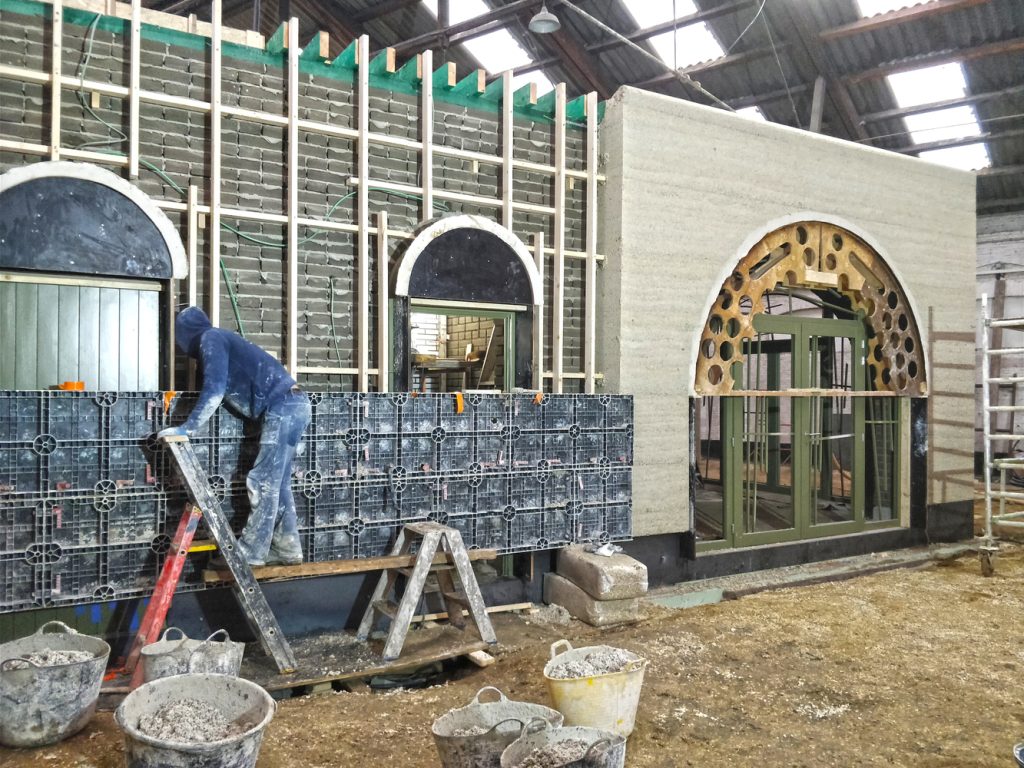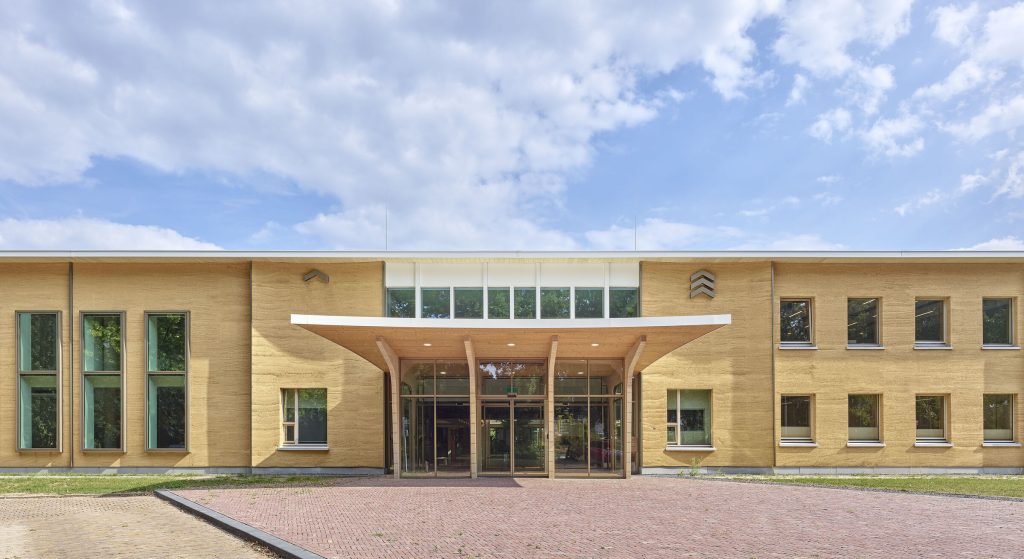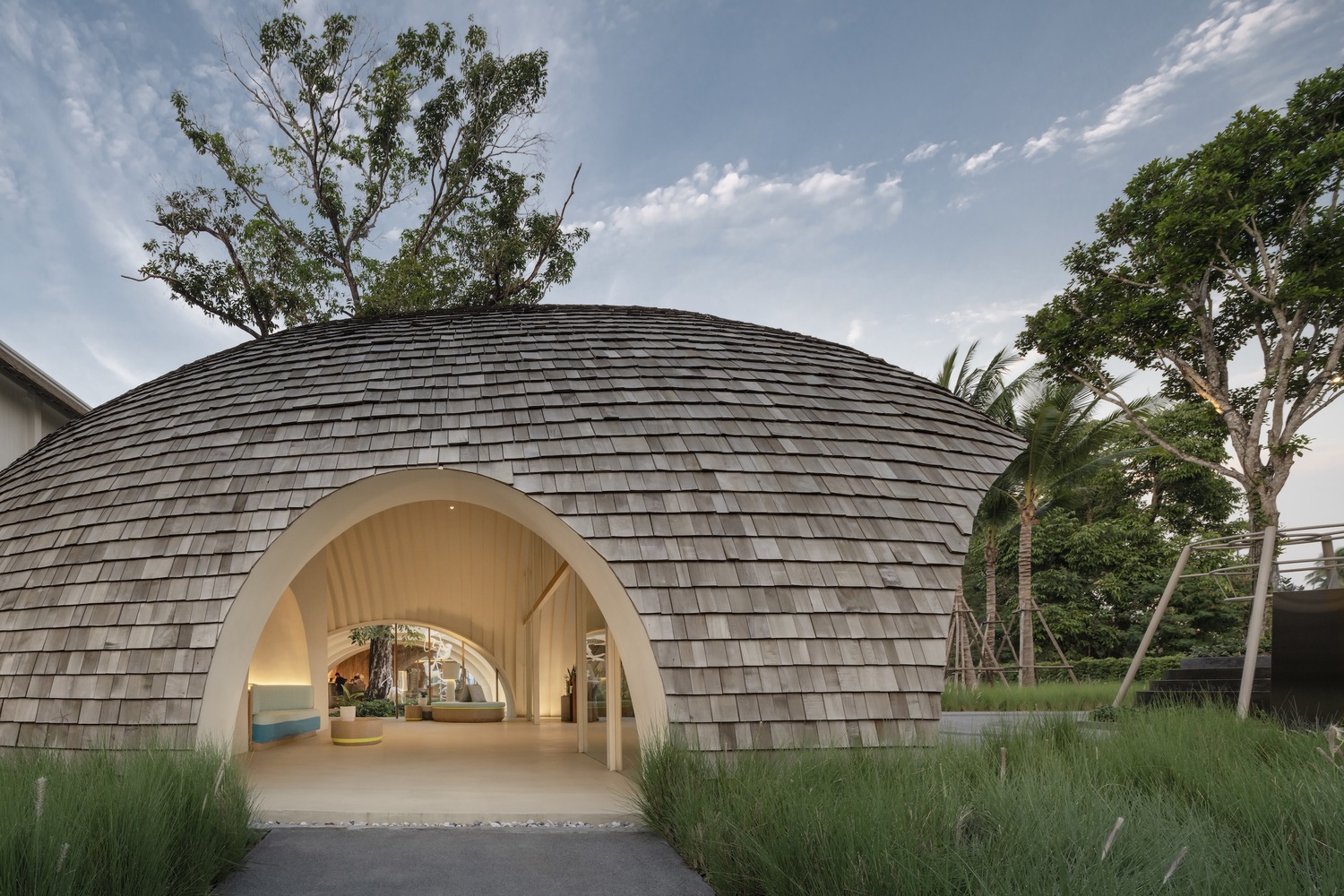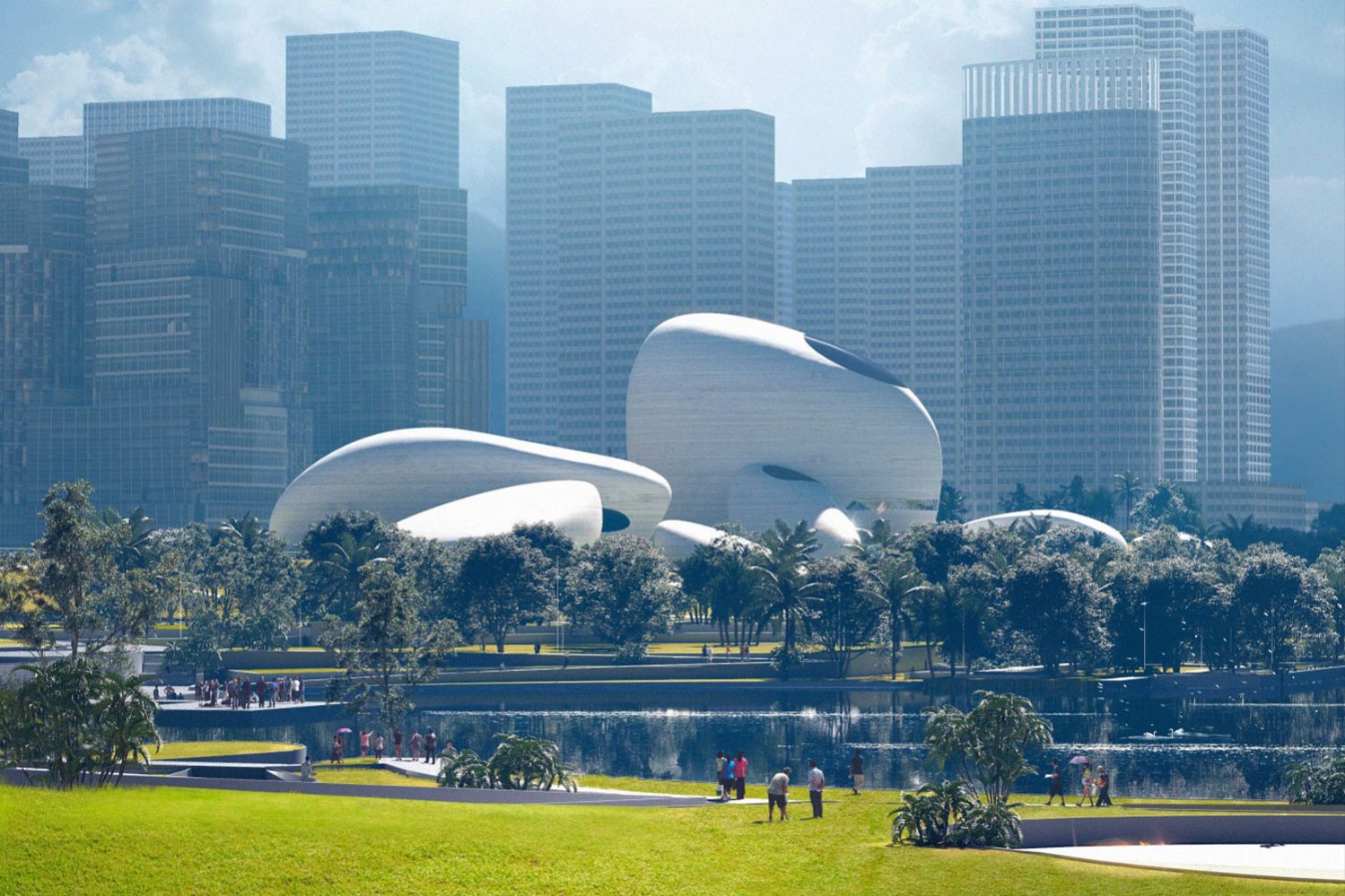
Architects and builders are looking for creative and environmentally friendly replacements for conventional building materials as sustainability gains importance in the construction sector. Hempcrete is one of these materials that has attracted interest.
Hempcrete, a material made from the versatile hemp plant, presents a new approach to building sustainable constructions. Hempcrete material creates positive effects in the sector with its cyclic processability. While the development of the material, which is still being studied in different varieties, continues, its use is also becoming widespread.
Rope, textiles, and biofuel are just some of the industrial products that use hemp. However, the high costs of hemp and a weak supply network make it difficult to use in the construction industry. And its perceptual links with recreational drug use also pose an obstacle to the production of the raw material. But in fact, the visibility of the benefits of the material is slowly spreading. Although there is no use permit for every building everywhere, the benefits revealed by the applications and studies will enable builders and policymakers to take a step. It is thought that the use of this material, which is suitable for a cyclical process from production to disposal and has positives in terms of carbon emissions, will be normal and widespread in five years.
This article aims to provide an acquaintance with the hempcrete material. And it proceeds through the questions of what hempcrete consists of exactly, how it is produced, and what its advantages and disadvantages can be, and aims to show its applied situations with a few architectural project examples.
Let’s take a closer look at the promising building material hempcrete:
What is Hempcrete?

Hempcrete is a bio-composite material that can be used as a sustainable alternative for materials used in construction, like standard insulation and concrete. It is mainly made of hemp, the inner core of the cannabis sativa plant, which has a texture similar to balsa wood. Hemp is a plant that can be produced without chemical plant protection agents, uses little water, and helps regenerate agricultural land. It serves as the foundation for hempcrete when mixed with lime and water. In contrast to other natural fibers, hempcrete has a high silica content that makes it possible to bind effectively with lime. Lightweight natural concrete is produced by mixing hemp with lime. Due to its high thermal mass and vapor permeability, it produces high-performance structures that can adhere to both present and upcoming thermal standards.
From a sustainability perspective, Hempcrete is very promising as it has a cyclical operation. It absorbs carbon dioxide during the production phase of the plant state, is built without using and releasing any chemicals during the construction phase, acts as an effective insulation during use, and finally emerges as a recyclable or reusable product in case of destruction. In addition, since it has an easily adaptable structure in the production process, its usage areas can be diversified. In this way, it does not focus on single-use but allows it to be used in many different ways, from renovation to wall construction, from insulation to coating.
What are the Benefits of Hempcrete?

It is possible to talk about many benefits of Hempcrete, from the production stage of the cannabis plant to the hempcrete formation process, from the purposes of use in the construction industry to recycling. So what benefits encourage Hempcrete to be used as an alternative plant-based material?
Sustainable and Renewable
The source of hempcrete is the fast-growing hemp plant. And hemp is biodegradable, recyclable, and carbon-negative. It has little embodied energy and produces no harmful consequences. It is possible to cultivate it without using pesticides, and it can help replenish depleted soil. Contrary to concrete, which releases a lot of CO2 during manufacture, hemp takes CO2 back from the air. One hectare of hemp is thought to be capable of absorbing 15 tonnes of CO2 during the growing season.
Thermal Performance
One of the most common uses of Hempcrete is as an insulating material. An insulation value can be created with the lime hemp ratios in it. As the amount of hemp increases, the density decreases, and the insulation value increases. When Hemp undertakes this task, the material formed is a comparatively light insulation material. In contrast to lightweight insulation materials, hempcrete’s thermal mass aids in mitigating daily temperature fluctuations by absorbing and releasing heat slowly and evenly.
Fire Resistance
Many experiments on Hempcrete have shown that it is a non-combustible material. Despite direct contact with burning wood, the non-flammable material provides fire protection and can improve overall building safety.

Vapour Permeability
Hemp is permeable to water vapor due to its porosity. It is hygroscopic, which means that it may absorb and release moisture from the air around it. This can assist in preserving a comfortable humidity level and avert problems like condensation and mold development.
Lightweight and Durable
One of the most important features of Hempcrete is its lightweight. Long-term use with its flexible and time-fitting structure despite its lightness. Even if it does not have enough load-bearing capacity to be used as a building element, it reduces the load on the foundation and building elements with its low density.
Design Flexibility
Hempcrete has a structure that allows flexible design. Due to its moldable nature, it can be used in various architectural applications, from simple walls to complex curves and shapes. Thus, the material can be easily made into custom forms, allowing for unique designs. This design flexibility can create opportunities for innovative structures that cannot be achieved with traditional building materials.
Disadvantages of Hempcrete

In general, it can be said that the benefits are high, but there are also cases where hempcrete is disadvantageous. These disadvantageous situations, mostly due to their uncommon use, can be caused by a lack of knowledge about production and use and its rarity.
Higher Initial Costs
Initially, hempcrete may cost more than more common building materials like insulation or concrete. This is a result of things like a lack of supply, unique building methods, and the demand for trained labor. Since it is not yet widely produced and used, there are no practical methods developed as in traditional materials, and prices remain high as in many rare and singular productions.
Limited Availability
Depending on the location, hempcrete may not be readily available. It may be difficult to locate hempcrete supplies and skilled contractors who are knowledgeable about its installation methods in some places. There are also areas where the production of cannabis is prohibited due to its connection with recreational drugs. For this reason, there are also regions where it is difficult to spread the suitability for the application, as there is / may be a stance against hempcrete production.

Longer Construction Time
The production process of hempcrete is still slow unless ready-made hempcrete blocks are used. Since traditional material does not have a fast-drying and fast-producing structure like concrete, the length of the process also affects the construction time. Apart from the cultivation of Hemp, it is the drying time of the mixture that prolongs the process the most for the custom-made mortars or blocks, which can be taken into account for the construction time, which can also increase the cost.
Lower Structural Strength
Hempcrete typically has a density of 15% that of concrete and a compressive strength of around 1 MPa, or roughly 1/20 that of residential grade concrete. This means that a load-bearing structure made of a different material must be used in conjunction with hempcrete walls. Currently, hempcrete is widely used as an insulating material, as a coating, or as a wall material in buildings with different structural elements. In all these cases, due to its light structure, it becomes advantageous against many traditional materials and reduces the pressures on the carriers.
Use of Hempcrete

Currently, hempcrete is becoming a popular plant-based material but is not yet widely used in every country. US, UK, and some European countries are among the examples where hempcrete architecture examples are seen. Apart from project-based productions, sales are also made with ready-made production. For example, the US-based company Hempitecture provides consultancy on projects sells powder and mixed products for special productions, produces cast-in pieces, and also sells ready-made hempcrete blocks. Various companies that provide this service, such as Hempitecture, are still in the minority. The support of these companies is an important step for the use of hempcrete in buildings. Recently, the search for alternative materials has increased due to ecological concerns, and we are encountering architectural projects implemented using hempcrete with environmental awareness, even if they are niche examples.
Flat House

Location: Cambridgeshire, United Kingdom
Architects: Practice Architecture + Material Cultures
Year: 2019
The radically low embodied carbon Flat House is located in Margent Farm, a rural research and development facility creating bioplastics from hemp and flax. The three-bedroom home was created as a prototype for prefabricated, environmentally friendly hemp construction that might be used on bigger scales. A prefabricated panel packed with hemp produced on a 20-acre farm was created after consulting extensively with engineers and material experts. The study resulted in the founding of Material Cultures, a research organization that is investigating natural materials in the context of off-site construction.
Wooden framing was used as the load-bearing structure in this house, which was built with the footprint of an existing barn. Used as a wall material, hempcrete does not lose the lightness of the building. It is aimed to popularize the hempcrete wall panels used for the first time in this project. No coating is used on the insulating effect of Hempcrete wall panels. Thus, the wooden structure and wall panels appear in the interior as they are, and the presence and harmony of materials add a different experience.
Town Hall of Voorst

Location: Voorst, Netherlands
Architects: De Twee Snoeken
Year: 2023
In the reconstruction of the Town Hall of Voorst building, various emphases were tried to be made by the authorities and citizens throughout the building. The Netherlands is a country that is widely heard for its work on sustainability and consideration of environmental concerns. The people of Voorst should make this felt through a public structure. According to the project architects, there was never a desire in the building program to be flashy and remarkable, but the architects cared about adding a privilege with a different point, with unpretentious but striking points.
It was desired to preserve the structure of the existing building, and the design was thus shaped. In such an area, various options have been considered while making design decisions, especially based on using natural materials. One of these materials is rammed earth. However, as rammed earth walls are often heavy, it was going to create pressure on the existing structure of the original building. Additionally, rammed earth is not a naturally insulating substance. Hempcrete, on the other hand, is insulating and has a texture comparable to rammed earth’s layers. It is not employed for load-bearing purposes. Therefore, the building in Voorst could produce walls that are only 38 mm thick, providing more space for the interior program.
During construction, hempcrete was produced on site. It is possible to read the hempcrete material, which is produced by pouring into molds and used with its natural appearance, directly from the facade of the building.
The use of natural materials is increasing in the search for alternative materials. This article aimed to take a closer look at hempcrete from these materials. Although these alternative natural materials have not become widespread yet, it is obvious that giving up on some traditional materials with visible damages cannot be quick. The emergence of new materials and the studies on them continue to be promising for the future. As these studies continue, making more innocent productions will undoubtedly be possible.







































